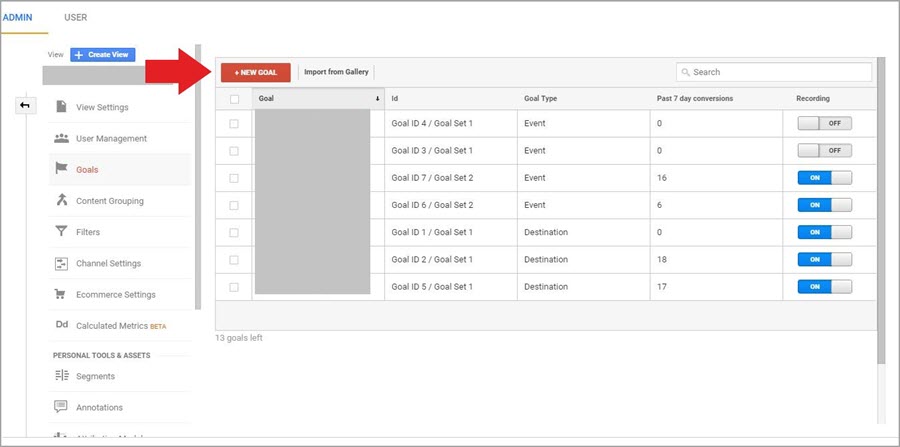Discover the Limitations of Google Analytics Goals: Introducing the Data Types That Remain Untrackable
As companies significantly depend on data-driven decision-making, comprehending the restrictions of tools like Google Analytics comes to be paramount. While Google Analytics Goals deal valuable insights right into customer communications, there exist information kinds that thwart monitoring, presenting challenges to a comprehensive understanding of individual actions.
Incomplete Individual Journey Tracking
Insufficient individual trip monitoring within Google Analytics can impede the capacity to precisely analyze individual habits. When the user trip is not totally tracked, there are gaps in the data that stop a comprehensive understanding of exactly how customers connect with a web site. This lack of insight can lead to missed out on chances for optimization and improvements to the customer experience.
One common issue with insufficient user trip monitoring is the failure to see the full path that individuals take in the past completing an objective or leaving the site. Without this details, it is testing to identify where customers may be encountering challenges or friction factors that stop them from converting. In addition, insufficient tracking can cover the effect of certain advertising and marketing efforts or internet site changes on individual habits.
To address this constraint, it is essential to establish proper tracking systems within Google Analytics to catch the entire individual trip. This might entail establishing occasion monitoring, goal funnels, or making use of devices like Google Tag Supervisor to ensure that no vital communications go unrecorded. By getting an extensive view of the individual journey, web site proprietors can make even more informed choices to enhance customer engagement and drive conversions.
Acknowledgment Difficulties
Browsing via attribution difficulties in Google Analytics calls for a thorough understanding of just how different touchpoints add to the overall conversion procedure. Attribution obstacles emerge from the complexity of modern-day client journeys, where users engage with multiple networks prior to converting.
One usual acknowledgment obstacle is the problem in associating conversions to the proper source, specifically in instances where individuals connect with numerous channels prior to converting. Furthermore, cross-device tracking presents one more attribution difficulty, as users typically switch over between tools throughout their trip, making it testing to track their interactions effortlessly.
Offline Conversions
Offered the obstacles linked with associating conversions precisely in online networks, the dimension of offline conversions offers a substantial possibility for marketing professionals seeking a much more detailed understanding of their clients' journey. Offline conversions refer to actions that consumers absorb the real world, such as making acquisitions in brick-and-mortar shops or over the phone, going to events, or engaging with printed materials - what data is google analytics goals unable to track. These conversions are essential for organizations that operate both online and offline, as they offer important insights into the effectiveness of advertising campaigns throughout different touchpoints
Tracking offline conversions typically presented a substantial challenge for marketing professionals, as it was testing to connect these actions back to certain on-line interactions properly. However, with innovations in modern technology, such as the assimilation of CRM systems, unique identifiers, and promo code codes, businesses can currently connect the void in between online and offline information to acquire a more alternative view of customer actions. By efficiently measuring offline conversions, marketers can enhance their methods, allocate resources a lot more successfully, and inevitably enhance the overall customer experience.
Cross-Device Monitoring
Cross-device tracking plays a vital function in recognizing the interconnected nature of consumers' electronic interactions across multiple tools. In today's omnichannel globe, where users effortlessly switch over in between desktop computers, tablet computers, and smartphones, tracking their behavior across these devices is vital for marketing experts to gain an extensive view of their customer trip.

Moreover, personal privacy concerns and regulations such as GDPR and CCPA have additionally challenging cross-device monitoring. With users demanding even more control over their data and increased constraints on tracking technologies, online marketers have to find privacy-compliant and ingenious means to attach user interactions across devices.
Dynamic Content Interaction
Recognizing customer involvement with dynamic material is pivotal in maximizing digital advertising and marketing methods for improved target market communication. Dynamic material describes internet site components that transform based on individual habits, choices, or various other factors, supplying a customized experience. Tracking customer interactions with dynamic content poses challenges for typical analytics tools like Google Analytics.
While Visit This Link Google Analytics can track standard interactions like clicks and web page views, it might struggle to catch more nuanced engagements within dynamic content. what data is google analytics goals unable to track. Metrics such as time invested on specific vibrant aspects, hover actions, or interactions within pop-ups are frequently not easily measurable utilizing typical tracking methods. This restriction hinders marketing professionals' ability to totally comprehend exactly how individuals are engaging with dynamic material and customize their approaches accordingly

Verdict
To conclude, Google Analytics goals have constraints in tracking insufficient individual journeys, connecting conversions accurately, capturing offline conversions, tracking cross-device interactions, and gauging vibrant web content interaction. These constraints highlight the value of checking out extra tracking techniques and tools to acquire an extra comprehensive understanding of customer actions and conversions past what Google Analytics can offer.
While Google Analytics Goals offer valuable insights right into individual interactions, there exist information types that elude monitoring, posing challenges to a comprehensive understanding of user behavior.Incomplete individual journey tracking within Google Analytics can hinder the ability to properly examine user actions. When the individual trip is not totally tracked, there are gaps in the data that avoid an extensive understanding of exactly how customers connect with a web site.One typical concern with incomplete customer journey monitoring is the lack of ability to see the complete path that individuals take before finishing an objective or leaving the site. By obtaining a detailed sight of the individual trip, web site owners can make more educated decisions to boost customer here are the findings interaction and more drive conversions.
Comments on “What Data Is Google Analytics Goals Unable to Track and Why”